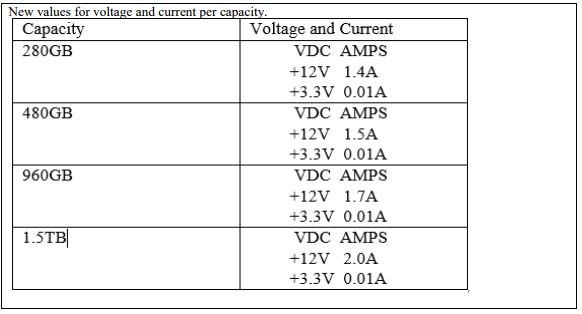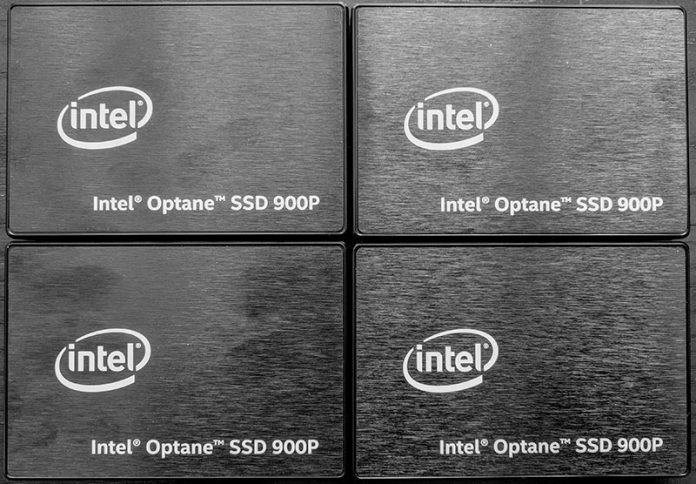The Intel Optane 900p is a popular device. It combines the new Intel 3D XPoint memory that offers many advantages over traditional NAND SSDs. We showed a real-world example of this in Exploring the Best ZFS ZIL SLOG SSD with Intel Optane and NAND. There, the Intel Optane 900p absolutely obliterated NAND based NVMe, SATA and SAS SSDs.
At launch, we saw only 280GB and 480GB Intel Optane 900p’s. This is a major limitation since many of our users, understandably, want to host VMs. NVMe devices take up valuable PCIe lanes so one wants to maximize capacity. The 480GB drive was simply not large enough. Intel is apparently prepping larger 960GB and 1.5TB Intel Optane 900p add-in card (AIC) drives.
Intel Optane 900p 960GB and 1.5TB Drives
Directly from Intel Product Change Notification PCN115990-00 page 3:

As one can see, there are two yet unreleased capacities the 960GB and 1.5TB which will use 1.7A and 2A on the +12V power respectively. Specifically, this is the second change of three in this PCN. The first is logo labeling and the third is printing firmware on the box. Change 2, above that table, is headlined by “The AIC HVM label will have logo changes and voltage and current changes.”
From this, we can see that Intel is issuing a labeling change to AIC or add-in cards. There is still no word on U.2 versions which makes sense. The U.2 form factor is most popular in servers and larger Optane drives would be extraordinarily popular for data center customers. That is our best conjecture as to why we have not seen even a 480GB U.2 900p drive to this point.
None of the other part numbers in the PCN referred to the larger Optane drives so this may be a false alarm. The PCN is not set to go into effect until December 27, 2017. At least now we can guess how much power a large 1.5TB Optane SSD will take. Stay tuned to STH as we show some more real-world usage scenarios for these high-speed SSDs. We even a handful to new nodes being installed in the STH hosting cluster.




These drives kick some serious butt at small & random performance. You can also offset the cost a bit with the SC codes while they last.
16GB of Optane per die times 7 channels equals multiples of 112GB raw. About 15% of the space is reserved for overprovisioning. 1792GB raw for the 1.5TB drive seems like the most plausible option then, with 16 dies per channel used. Each channel on the existing PCIe cards correspond to 4 packages each for 28 in total. Intel would need to pack 4x16GB dies into each package assuming a new PCB isn’t used.